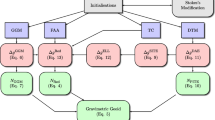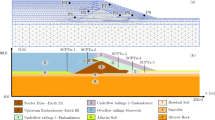Abstract
When designing an underground structure, the geologist’s job is to reveal the arrangement of the terrain of the massifs crossed and thus to highlight what is not obvious at first sight. Sometimes, the geological model produced is not completely satisfactory, especially when there are still grey areas, inconsistencies, and mismatches. In such cases, the conceptual model must be revised, and the main difficulty lies in questioning the data available at all levels (regional, local) and how these data are interpreted. This article explains how such a situation was encountered for a tunnel project in the Coniacian flysch of the Western Pyrenees. In its initial phase, the geological model conceptually considered that the terrain was interspersed with faults associated with numerous crushed zones. However, the overall coherence of the model, its connection to the regional context, and the detailed interpretation of borehole logging data eventually called into question the structural basis of the model. An adaptation of this model, by better taking into account the local geological folds, allowed the interpretation to be oriented toward a ductile model. In particular, the geological core surveys and the acoustic borehole imaging of discontinuities were at fault for the erroneous interpretation. The re-examination of the collected cores and the re-positioning of the discontinuities confirmed the new conceptual orientation of the model. The comprehensiveness of the identified folds and their crushed cores was analyzed and summarized to produce a more precise and clearer model despite the chaotic layout of the terrain.














Similar content being viewed by others
References
AFTES GT24R3A1 (2023) Geological, hydrogeological and geotechnical investigations required for the design of underground structures. Recommendations, pp 124
Baynes FJ, Parry S (2022) Guidelines for the development and application of engineering geological models on projects. International Association for Engineering Geology and the Environment (IAEG) Commission 25 Publication No. 1, 129
Biteau JJ, Canerot J (2007) La chaîne des Pyrénées et ses avants-pays d'Aquitaine et de l'Ebre : caractéristiques structurales, évolution géodynamique et tectono-sédimentaire. Revue Géologues n°155 16-28
BRGM et Association des géologues du Sud-Ouest (2018) Synthèse géologique et Géophysique des Pyrénées - volume 2 and 3 - Cycle alpin : stratigraphie et phénomènes alpins. Joint publication
BRGM (1970) Geological map of the BRGM at 1/50 000 Oloron-Sainte-Marie XV-46
Deloffre R (1965) Étude Géologique du Flysch Crétacé Supérieur entre les Vallées de l'Ouzom et du Gave de Mauléon (Basses Pyrénées). PhD thesis
Author information
Authors and Affiliations
Corresponding author
Rights and permissions
About this article
Cite this article
Gaillard, C., Kasperski, J. Geological model for a tunnel in Pyrenees (France): importance of the feedback loop based on re-examined investigation data. Bull Eng Geol Environ 83, 141 (2024). https://doi.org/10.1007/s10064-024-03645-6
Received:
Accepted:
Published:
DOI: https://doi.org/10.1007/s10064-024-03645-6




